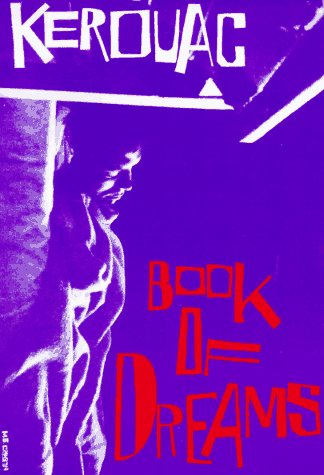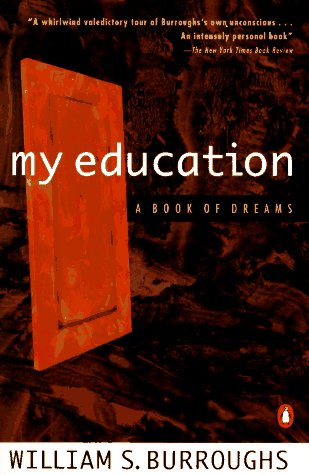Dream Writing
U. of Kent, Canterbury, Oct. 15-16-2005
[CFP]
“Beat
Dreams? The Books of Dreams of Jack Kerouac and William Burroughs”
***
Bent Sørensen, Aalborg University, Denmark
In 1961 Jack Kerouac published a Book of Dreams
containing a
number of hastily scribbled accounts of dreams Kerouac remembered
immediately
after waking up from a period of sleep. Strangely the book contains
both a
“Foreword” and a “Preface”, both penned by Kerouac, explaining its
genesis in
almost identical terms. The two introductory texts do, however,
contradict one
another both in the details of the process of dream collation and
writing
(“They were all written spontaneously, non-stop” (Foreword) vs. “When I
woke up
from my sleep I just lay there looking at the pictures that were fading
slowly.
As soon (one minute or so) as I had assembled them […] I got my weary
bones out
of bed & […] scribbled in pencil in my little dream notebook till I
had
exhausted every rememberable item.” (Preface)), and in the sets of
political or
religious implications Kerouac wishes to draw from the universal
experience of
dreams (“The fact that everybody in the world dreams every night ties
all
mankind together shall we say in one unspoken Union and also proves
that the
world is really transcendental which the Communists do not believe
because they
think their dreams are ‘unrealities’ instead of visions.” (Foreword)
vs. “That
is because the subconscious mind (the manas working thru from
the alaya-vijnana)
does not make any mental discriminations of good or bad, thisa and
thata, it
just deals with the realities.” (Preface)) Thus, the spontaneity
emphasised in
the Foreword is replaced by a more mediated process of assembly in the
Preface’s account, and the anti-Communist discourse of the Foreword is
replaced
by a Buddhist credo in the Preface.

Kerouac’s Book of Dreams can be read as an
exercise in the
vindication of his own poetics of spontaneity which he detailed in a
number of
manifestoes for prose writing and living. Dreams to Kerouac were
guaranteed
unmediated and uncensored experience to be channelled straight onto the
page.
In contrast his fellow founder of the Beat lifestyle and circle of
writers
known as the Beat Generation, William Burroughs, used his My
Education – a
Book of Dreams from 1995 as a form of memoir writing to stand in
lieu of
the autobiography he never wrote. While My Education also
contains
actual dream transcripts, based on “hastily jotted notes on scraps of
paper and
index cards and pages typed with one hand”, the dream segments are
interrupted
by ‘locators’ dating and explaining some of the dream entries. These
locator
paragraphs function as the editor instance required but often left
implicit in
autobiographical writing. My Education is, however, typical of
Burroughs’ writing style with its notorious cut-ups of existing texts
palimpsested on with new writing, emanating more or less spontaneously
from
Burroughs’ both creative and selectively editorial mind. It is also
very
different from the dream writing of Kerouac which never explicitly
admits to
being edited or re-written. While Kerouac argues that his Book of
Dreams
can be read as a continuation of his autobiographical and confessional
novels (“The
heroes of On the Road, The Subterraneans, etc. reappear
here
doing further strange things for no other particular reason than that
the mind
goes on”), Burroughs deliberately manifests and emphasises the
real-world
correlative to his writing in My Education. The two dream books
thus
represent two different strategies within the shared didactic endeavour
of all
confessional writing: one strategy, Kerouac’s, is implicit (except in
the
introductory texts) and the other, Burroughs’, is explicit in its
insistence
that autobiography is meant to instruct the reader in matters of
general
significance concerning life and how to live it.
